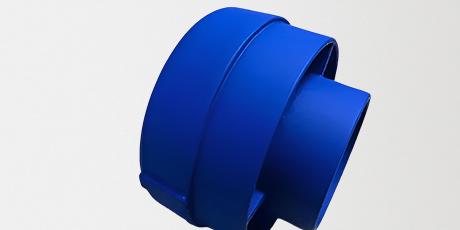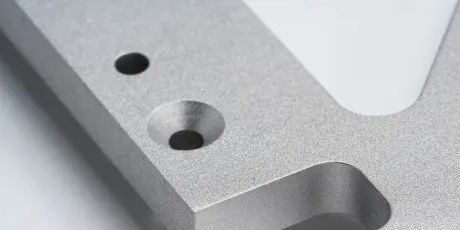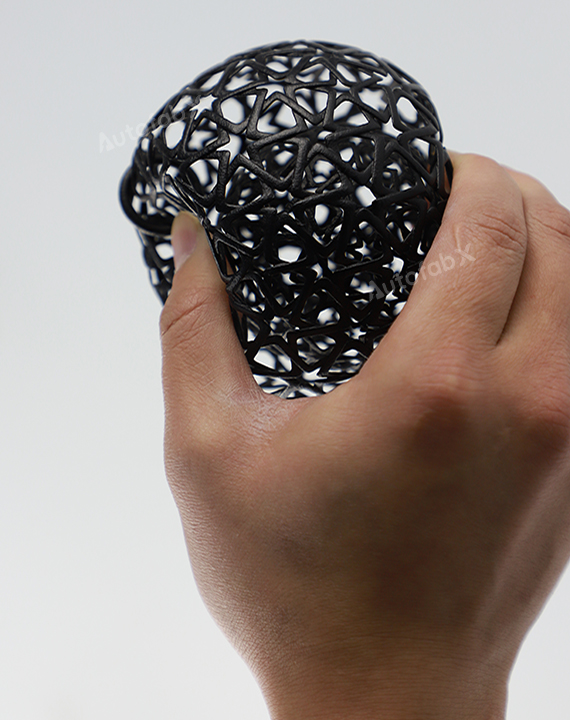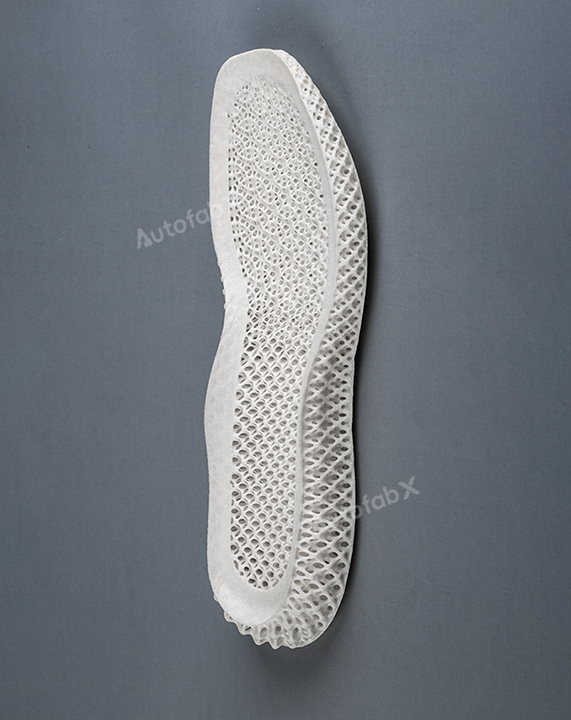
Quick Look
| Density(g/cm³) | Tensile Strength | Young's Modulus | Elongation at Break | Heat Deflection Temperature |
|---|---|---|---|---|
| 1.1 | 20MPa | 20MPa | 520% | 90℃ |
About the Material
Advantages:
High Flexibility and Elasticity: TPU provides excellent flexibility, making it suitable for parts that require stretching and bending.
Impact and Abrasion Resistance: TPU is resistant to impact and abrasion, ensuring durability for functional parts.
Chemical Resistance: TPU resists oils, greases, and various chemicals, making it suitable for industrial and automotive applications.
Soft Touch and Comfort: The material offers a soft touch and comfort, ideal for wearable products and consumer goods.
Limitations:
Limited Heat Resistance: TPU has moderate heat resistance, which may limit its use in high-temperature environments.
Surface Finish: Parts may have a slightly textured surface, which may require additional finishing for certain applications.
Post-Processing Requirements: Additional post-processing, such as bead blasting, may be needed to achieve the desired surface finish.
Chemical Composition Table for TPU
| Component | Composition |
| Thermoplastic Polyurethane | 100% |
| Additives (Colorants) | Varies |
Mechanical Machining Properties Table for TPU
| Property | Value |
| Machinability Rating | Low |
| Cutting Speed (m/min) | 5-10 |
| Tool Wear Resistance | High (due to elasticity) |
| Coolant Requirement | Optional |
| Surface Finish Quality | Moderate |
Design Parameters Table for SLS Printing with TPU
| Maximum Bulid Size(mm) | Minimum Wall Thickness | Minimum Drill Size | Minimum Assembly Gap | Tolerance |
| 380*380*420 | 0.8mm | 1mm | 0.2mm | ±0.3% *Length(lower limit of ±0.2 mm) |
Industry Applications and Case Studies for SLS Printing with TPU
Footwear Industry:
Application: Production of shoe soles and cushioning components.
Case Study: A footwear company used TPU to produce shoe soles, leveraging the material's flexibility and comfort.
Automotive Industry:
Application: Manufacturing of gaskets, seals, and protective components.
Case Study: An automotive manufacturer used TPU for gaskets and seals, benefiting from its chemical resistance and flexibility.
Medical Devices:
Application: Production of flexible medical components and wearable devices.
Case Study: A medical device manufacturer used TPU to create wearable health monitors, ensuring comfort and durability for the user.
Frequently Asked Questions (FAQs) about SLS Printing with TPU
What are the benefits of using TPU in 3D printing?
TPU offers high flexibility, impact resistance, and chemical resistance, making it ideal for functional parts that require elasticity.
Is TPU suitable for functional parts?
Yes, TPU is suitable for functional parts that require flexibility, toughness, and resistance to chemicals and abrasion.
What industries benefit from SLS printing with TPU?
Industries such as footwear, automotive, and medical devices benefit from the versatility and flexibility of TPU.
How accurate is SLS printing with TPU?
SLS printing with TPU can achieve tolerances of ±0.5 mm, suitable for most flexible and functional applications.
What post-processing is required for TPU-printed parts?
Post-processing may include bead blasting or polishing to improve the surface finish and appearance.
Can TPU be used in high-temperature environments?
TPU has a heat deflection temperature of 60°C, making it suitable for moderate-temperature applications but not for high-heat environments.
How strong are TPU-printed parts?
TPU-printed parts are highly flexible and durable, with good impact resistance, making them suitable for applications that require elasticity and resilience.
Finishing Options








Parts Made by AutofabX

